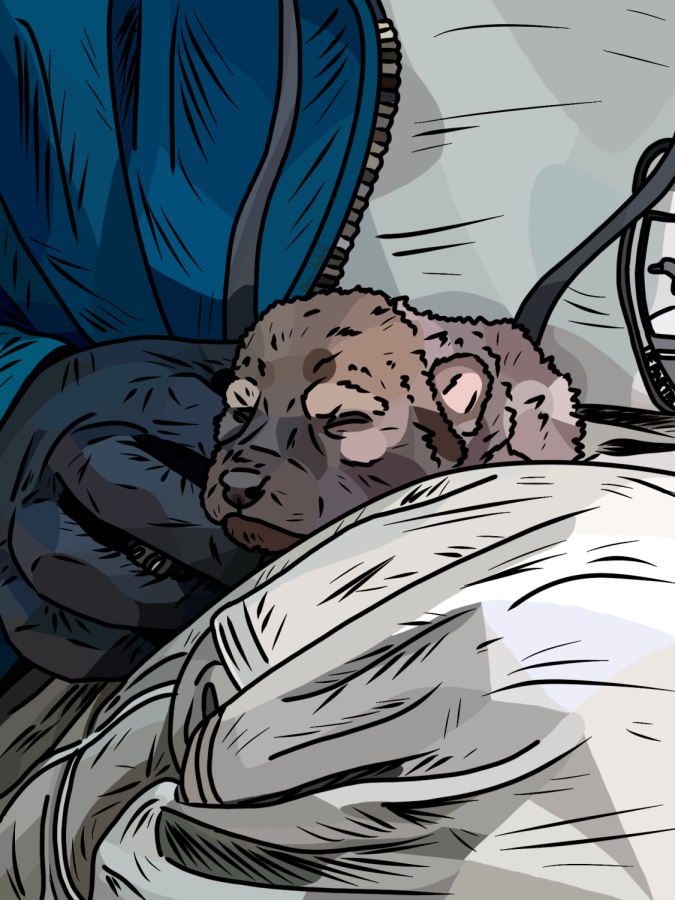Red Wolves: A New Hope For A Dying Breed
May 5, 2022
“Before looking at this information, I didn’t even know that red wolves existed, nor that they were dealing with such grave, horrible issues, in relation to population and facing down the colossal threat of extinction,” states Gwen Starks, an Elkhart High School senior.
It’s always incredibly unfortunate, and a sad, sad day when another one of the teeming species of the planet goes extinct, lost to the world by uninformed or ignorant people. While extinction has been a rather natural part of life for hundreds and hundreds of years, it should never be forced upon any species simply by greed or a lack of understanding from man. It’s a fate that has been attempted to be prevented countless times now, and not all that frequently have those missions been successful. However, even if a species won’t fully recover, or their future is truly to become extinct, one cannot help but hope for a better future for these dying “breeds” when new life comes into the world and adds new numbers on to the species.
Red wolves, a species that have been teetering on the edge of extinction for years now, may have just gotten this brand new source of hope.
These canines once were staggered across southeastern North America, existing in the U.S. “from Florida to the Great Plains and the Ohio River Valley,” according to NPR. They were a thriving species that existed far and wide, but because of humans and “hunting, extermination and the expansion of cities and towns,” they nearly became extinct, NPR goes on to explain. When the Endangered Species Act of 1973 was passed, only 17 wolves were left to save, living in a small area across the Louisiana and Texas coast; 14 of these 17 wolves were captured to be transferred into captivity, so as to start up a breeding program to hopefully bring the wolves back. The U.S. Fish and Wildlife Service attributed the deaths of the last wild wolves to “continued human persecution and a loss of habitat, [and] the red wolf was declared extinct in the wild in 1980.”
In 1984, around 63 red wolves were living healthy and well in captivity, preparing to be released into the wild to hopefully start up a second chance for the wolves. The Red Wolf Recovery Program—a part of the Red Wolf Species Survival Plan—states that more than 60 adult wolves were released into the Alligator River National Wildlife Refuge between the years of 1987 and 1994. Still instinctively wild, and wild in nature, the wolves thrived, forming territories and packs, as well as beginning to breed. The population reached its peak in 2012 with a new number of 120 wolves living in the wild, causing other environmentalists to see the success of the Red Wolf Recovery Program and use it as a model for other reintroduction efforts, such as with “gray wolves, Mexican wolves, California condors and the black-footed ferret,” states NPR. With this peak number of 120, The Fish and Wildlife Service states that this was the first time a large carnivore was brought back from extinction, and reintroduced to the wild, in the U.S. However, that number will likely remain the peak for members of the species, as once more, humans have threatened the species.
Mistaken for coyotes because of the similar appearance of the canines between fur color and body shape/structure, red wolves were being shot, one after another, during 2012, after the North Carolina Wildlife Resources Commission had just recently—during that time—approved a temporary rule that “allow[ed] hunters to kill coyotes, which occasionally breed with the [red] wolves, at night in the area where red wolf was trying to make a comeback,” NPR notes. By the time a settlement had been reached between environmentalists and the NCWRC, the population had dropped to about 100, and now spotlight hunting at night—which involves off-road vehicles and various forms of light, from high-powered spotlights to flashlights, that make special use of the tapetum lucidums, or the reflective layer behind the retina in the eyes of nocturnal animals that increases the amount of light absorbed for night vision, reflective properties to let them locate the animals in the brush and darkness—has been made illegal, and hunters who are allowed to hunt coyotes can only do so during daylight hours, and are required to carry a permit to do such hunting.
By 2020 and 2021, there became only an estimated 17 to 20 red wolves left. A steady decline in numbers had been occurring since 2008, where only 47 new wolves were born, and no other wolves had been born since 2018 with the arrival of four pups, with no red wolf births having been reported in the wild during 2019, 2020, and 2021. Red wolves, which continue to remain one of the most endangered species on the planet, only have an estimated 15 to 17 members in the wild, and another 241 living in captivity.
“Considering how successful the breeding program was before, I believe that trying to reimplement, and/or continuing the current program is necessary, and has a high probability to be just as successful, or even more so than before,” says Starks, having taken the time to comb over the data. “This will help the wolves greatly, and giving up now means not being able to see the potentially incredible future the wolves may have in store for themselves.”
Despite how dreadful these facts of the matter are, the breeding program must remain hopeful, and that they have—enlightening them to a pay-off of six new red wolf cubs in North Carolina. The first litter of red wolf cubs born in the wild, for the first time in four years, arrived somewhere around likely the April 20 mark, and with their birth, a new hope has also arrived for this near-extinct species. “These births are super important,” points out Starks, as “this next generation will continue the lines of the species, further increasing its numbers and helping bring these wolves back from the brink of extinction.”
Despite all the hardships and loses the canines have gone through, their species is still trying to survive and thrive once more, and the birth of these pups likely ushers in a new hope, a new generation of red wolves to continue the species, and help the wolves become the prosperous, apex predators that they have always been, and were born to be. “These births are beautiful,” Starks says to conclude her view on the situation. “New life joining the world is always wonderful—plus, the cubs are super cute!”








